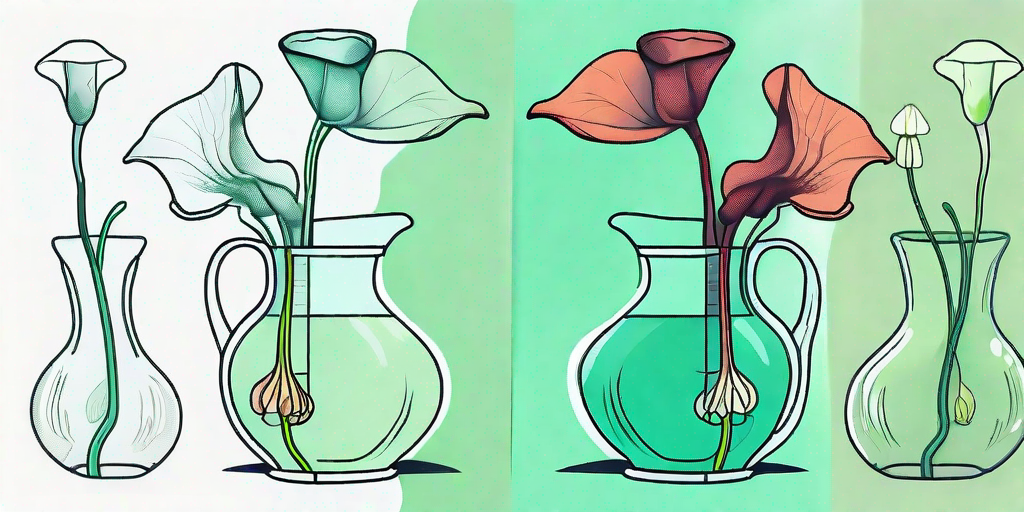
Oh, the horror! Your once vibrant and carnivorous pitcher plant has turned into a blackened shadow of its former self. But don't despair, dear plant parent, for we have the antidote to your botanical woes. This guide will take you on a journey from despair to triumph, as we explore how to revive your blackened beauty.
Understanding Your Pitcher Plant
Before we dive into the rescue mission, let's take a moment to understand the unique nature of pitcher plants. These fascinating creatures of the plant kingdom are carnivorous, feasting on insects to supplement their diet. They're like the Venus flytrap's more sophisticated cousin, sipping on bug soup instead of chomping down on their prey.
However, their exotic dietary habits mean they require a bit more TLC than your average houseplant. They're not just being dramatic when they start to wilt - they're trying to tell you something. So, let's decode their distress signals and get your plant back to its bug-eating best.
The Importance of Humidity
Pitcher plants are the divas of the plant world, demanding high humidity levels to keep their skin - I mean, leaves - looking fresh. If your plant is looking a bit peaky, it could be crying out for a more humid environment.
But fear not, you don't need to move to the tropics to keep your plant happy. A simple humidifier or a daily misting can work wonders. Or, for the truly dedicated, a terrarium can provide the perfect humidity-controlled home for your pitcher plant.
Light and Temperature Needs
Like a sunbathing beauty, pitcher plants love a good dose of light. But they're not so keen on the heat. If your plant is turning black, it could be a sign of sunburn. Yes, plants can get sunburn too!
Try moving your plant to a spot where it can bask in bright, but indirect light. And keep an eye on the temperature. Pitcher plants prefer cooler conditions, so if your home is more Sahara desert than cool rainforest, you might need to adjust your thermostat.
Reviving Your Pitcher Plant
Now that we've covered the basics of pitcher plant care, let's get down to the nitty-gritty of reviving your blackened beauty. It's time to roll up your sleeves and channel your inner plant doctor.
Remember, patience is key. Your plant didn't turn black overnight, and it won't recover overnight either. But with a little love and care, you can nurse it back to health.
Step 1: Diagnosis
First things first, you need to figure out what's causing your plant's distress. Is it too dry? Too hot? Not getting enough light? Or perhaps it's simply old age - yes, even plants get wrinkles.
Once you've identified the problem, you can start to remedy it. This might involve moving your plant to a new location, adjusting your watering schedule, or even repotting your plant in fresh soil.
Step 2: Treatment
Now that you've diagnosed the problem, it's time to treat it. This could involve a variety of measures, from adjusting the humidity and light levels, to changing the watering schedule, or even repotting the plant.
Remember, less is often more when it comes to plant care. It's easy to overcompensate and end up overwatering or overfeeding your plant. So take it slow, make small adjustments, and monitor your plant's response.
FAQs
Still got questions? Don't worry, we've got answers. Here are some of the most common queries about pitcher plant care.
Why is my pitcher plant turning black?
There could be several reasons why your pitcher plant is turning black. It could be due to overwatering, lack of humidity, too much direct sunlight, or simply old age. The key is to observe your plant closely and try to identify any changes in its environment.
How often should I water my pitcher plant?
Pitcher plants prefer their soil to be consistently moist, but not waterlogged. A good rule of thumb is to water your plant when the top inch of soil feels dry to the touch. But remember, every plant is unique, so you might need to adjust this depending on your plant's specific needs.
Can I revive a dead pitcher plant?
It depends on how far gone your plant is. If it's completely black and shriveled, it might be too late to save it. But if there are still some green leaves or new growth, there's a good chance you can revive it. The key is to identify and address the cause of the problem as soon as possible.
Conclusion
So there you have it, a comprehensive guide to reviving your blackened pitcher plant. Remember, plant care is a journey, not a destination. So don't be disheartened if your plant doesn't bounce back immediately. With a little patience and a lot of love, your pitcher plant can return to its former glory.
And remember, every plant parent has their struggles. Even the greenest thumbs have their off days. So don't beat yourself up if your plant is looking a little worse for wear. You're doing your best, and that's all any plant can ask for.















